Top Eco Friendly Building Materials for Sustainable Homes
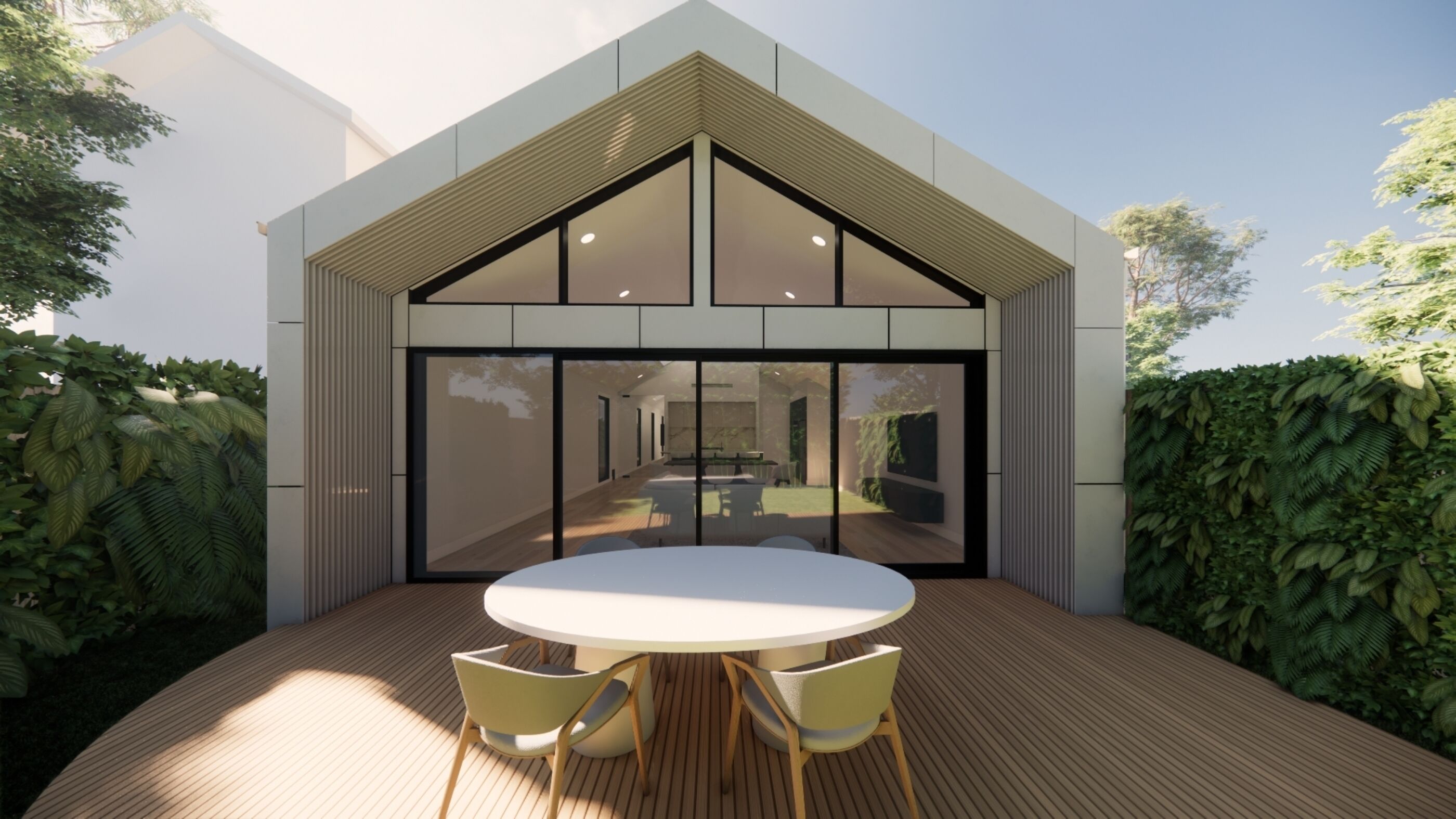
Building a Greener Future: Exploring Eco-Friendly Materials
Discover nine innovative eco-friendly building materials ideal for luxury residences, modern extensions, and bespoke renovations. This list helps you choose sustainable materials that minimize environmental impact without sacrificing quality or aesthetics. Learn about options like bamboo, recycled steel, and hempcrete, which address the growing need for responsible construction. Whether planning a new build or renovation, this guide highlights superior, sustainable building materials for your next project.
1. Bamboo
Bamboo is a standout choice among eco friendly building materials, offering a compelling combination of sustainability, strength, and aesthetic appeal. Its rapid renewability makes it a particularly attractive alternative to traditional timber, especially for environmentally conscious builders in the AU region. Growing up to 3 feet per day for some species, bamboo reaches maturity in just 3-5 years compared to the 10-20 years required for most softwoods. This significantly reduces pressure on forests and contributes to a lower environmental impact. Its impressive strength-to-weight ratio, comparable to steel in tensile strength and exceeding concrete in compressive strength, makes it suitable for a wide range of applications, from flooring and wall panels to structural beams and roof supports.
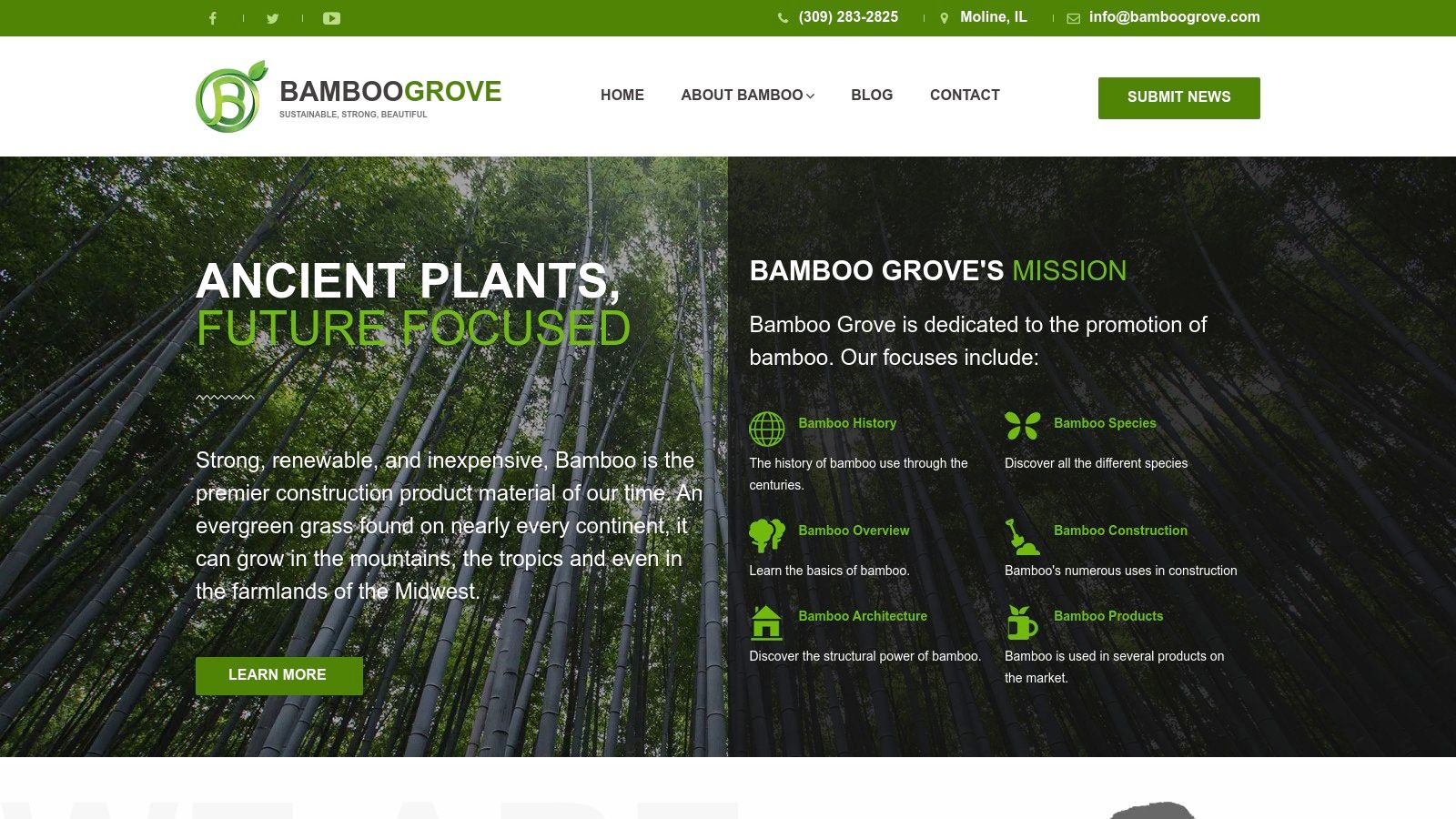
For affluent homeowners in Caulfield, Victoria seeking to build custom luxury residences or bespoke renovations, bamboo offers a unique opportunity to incorporate a premium, eco-conscious material. Imagine sleek bamboo flooring in a modern extension, or a stunning bamboo staircase as a centrepiece of a renovated property. The natural variations in colour and texture create a visually appealing aesthetic that complements both contemporary and traditional designs. Furthermore, bamboo's natural resistance to pests and moisture contributes to its longevity and reduces the need for chemical treatments.
Technology-oriented individuals focused on smart, energy-efficient homes will appreciate bamboo’s contribution to sustainable building practices. Its ability to sequester carbon dioxide during growth further enhances its environmental credentials. Whether you're planning a second-floor extension or a ground-floor expansion, bamboo can be incorporated into various structural and decorative elements. Engineered bamboo products, such as laminated bamboo lumber and strand woven bamboo, offer even greater strength and dimensional stability, expanding its use cases in construction.
Pros:
- Highly Renewable: Rapid growth makes it a highly sustainable resource.
- Exceptional Strength: Offers excellent mechanical properties suitable for structural applications.
- Aesthetically Pleasing: Natural variations create a unique and attractive look.
- Sustainable Harvesting: Can be harvested without killing the plant.
Cons:
- Treatment Required: Needs treatment to protect against insects and fungi in Australia’s climate.
- Variable Quality: Quality can differ depending on species and sourcing.
- Shipping Considerations: Sourcing globally can increase carbon footprint.
- Limited Standardization: Less standardization compared to traditional materials can pose design challenges.
Pricing & Availability: Pricing for bamboo building materials varies depending on the product type, size, and supplier. It is generally comparable to mid-range to high-end hardwoods. Availability in Australia is increasing, with several suppliers specializing in bamboo products for construction.
Implementation Tips:
- Source Locally: Prioritize locally sourced bamboo to minimize transport emissions.
- Professional Installation: Ensure proper installation by experienced professionals familiar with bamboo construction.
- Appropriate Treatment: Use appropriate treatments for Australian conditions to ensure longevity and prevent pest infestation.
Website: https://www.bamboogrove.com
Bamboo’s impressive combination of strength, sustainability, and beauty positions it as a leading eco-friendly building material. Its versatility and increasing availability make it a viable option for a variety of construction projects in Australia, from small renovations to large-scale luxury homes.
2. Recycled Steel
For Caulfield, Victoria homeowners seeking truly sustainable building practices, recycled steel stands out as a superior choice amongst eco-friendly building materials. Offering exceptional strength, durability, and a dramatically reduced environmental impact compared to virgin steel, it's a key component in achieving a greener build. From structural frameworks and roofing to reinforcement within concrete slabs, recycled steel provides the backbone for countless construction projects, delivering long-lasting performance without compromising the planet. It's a particularly compelling option for affluent homeowners, those planning modern extensions, or clients undertaking bespoke renovations seeking both luxury and environmentally conscious construction. Learn more about Recycled Steel This material aligns seamlessly with building smart, energy-efficient homes, making it a top choice for technologically oriented individuals as well.
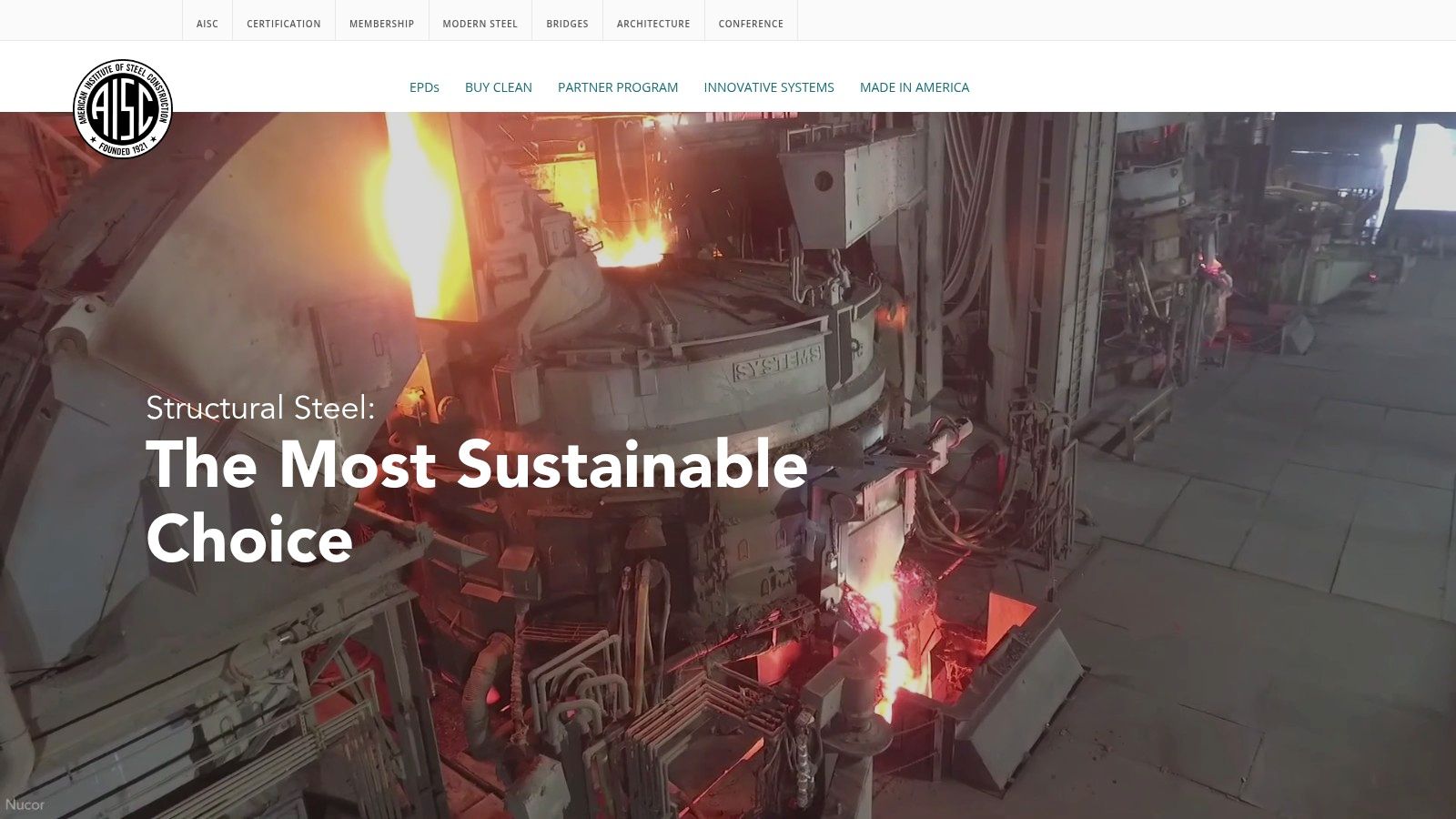
Recycled steel earns its place on this list due to its impressive sustainability credentials. Its production requires up to 75% less energy than virgin steel, significantly lowering embodied energy and greenhouse gas emissions. It's 100% recyclable indefinitely without any loss of quality, embodying the principles of a circular economy. This means that steel from your ground floor extension could be reused in a future second-story addition or even in a completely different building decades from now. Its remarkable strength-to-weight ratio allows for efficient structural designs, minimizing material usage and further reducing the environmental footprint.
Features and Benefits:
- Indefinite Recyclability: Recycled steel can be endlessly recycled without degradation, ensuring its continued use and reducing landfill waste.
- Reduced Environmental Impact: Using recycled steel minimizes the need for energy-intensive mining and lowers greenhouse gas emissions associated with steel production.
- High Strength and Durability: Offers exceptional structural integrity and a lifespan of 50+ years for most applications, ensuring the longevity of your investment.
- Consistent Quality: Maintains high-quality standards regardless of the recycled content.
- Pest, Rot, and Fire Resistance: Provides inherent resistance to pests, rot, and fire, enhancing the safety and longevity of your home.
Pros and Cons:
Pros:
- Significantly lower embodied energy than virgin steel.
- Exceptional durability and structural performance.
- Reduces landfill waste and conserves natural resources.
- Resistant to pests, rot, and fire.
Cons:
- Still requires substantial energy for the recycling process.
- Thermal bridging can impact building energy efficiency, potentially requiring additional insulation.
- Higher initial cost compared to some alternative materials (though this is often offset by its longevity and reduced maintenance).
- Heavy weight increases transportation emissions, a factor to consider during planning.
Pricing and Technical Requirements:
Pricing for recycled steel varies depending on market conditions and specific product requirements. Consulting with a structural engineer and building supplier is essential to determine the appropriate type and quantity of recycled steel needed for your project. They can also advise on specific Australian building codes and standards relevant to your location.
Implementation Tips:
- Engage with architects and engineers experienced in designing with recycled steel.
- Source your materials from reputable suppliers who adhere to strict quality control standards.
- Consider the thermal bridging potential and implement appropriate insulation strategies.
- Factor in the weight of steel during transportation planning and construction.
By choosing recycled steel, Australian homeowners are not only investing in a durable and high-performing building material but also contributing to a more sustainable future. Visit the American Institute of Steel Construction (https://www.aisc.org/sustainability) for more information on steel sustainability.
3. Cork
Cork stands out as a premium, eco-friendly building material ideal for discerning homeowners in Caulfield, Victoria seeking sustainable luxury and high-performance construction. Harvested from the bark of cork oak trees without harming the tree, this remarkable natural material regenerates every 9-12 years, ensuring a renewable resource for generations to come. Its unique properties make it an excellent choice for a variety of applications in bespoke renovations, modern extensions, and new luxury builds, particularly for those prioritising smart, energy-efficient homes.
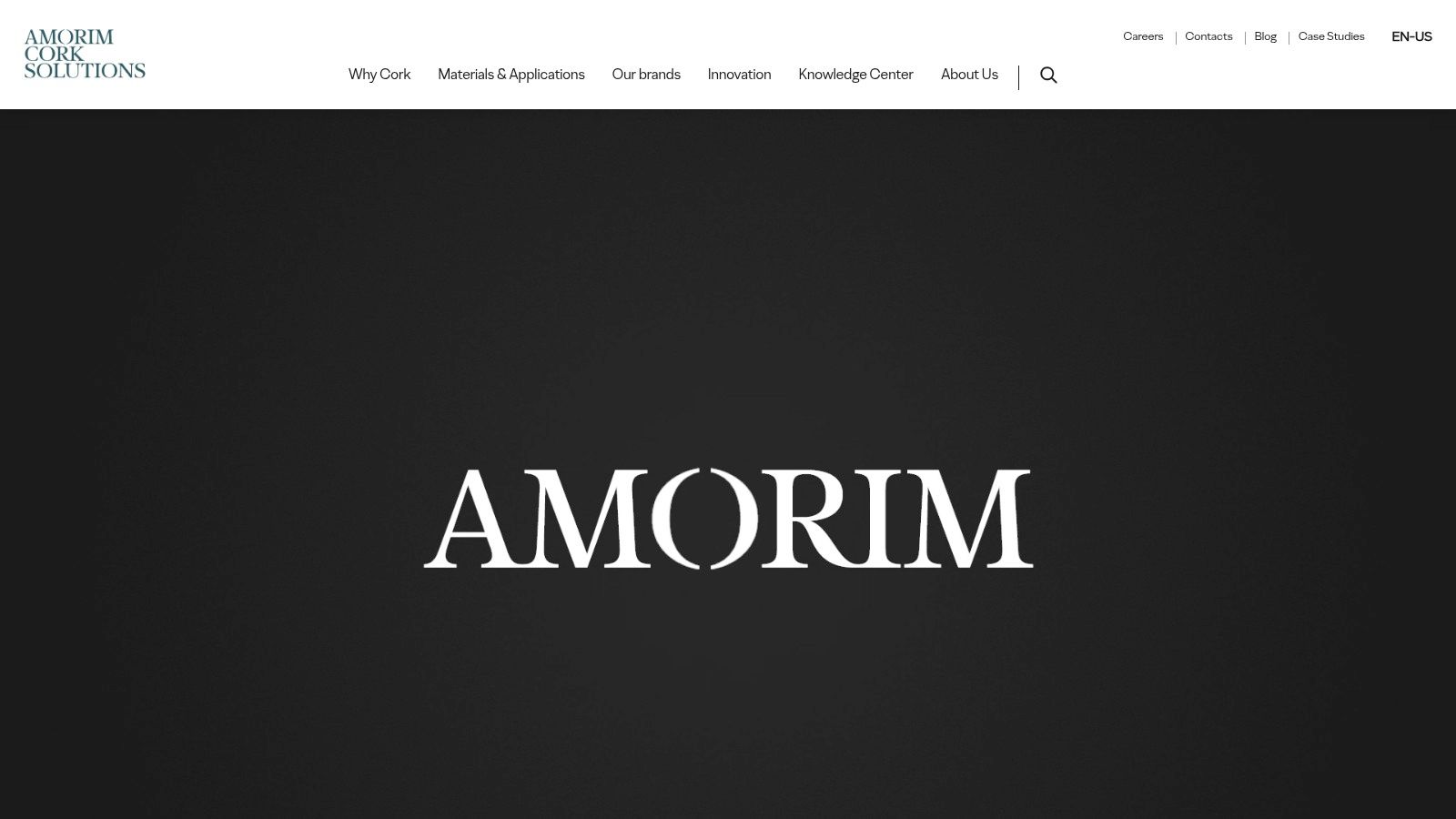
Cork's exceptional thermal and acoustic insulation capabilities are highly desirable for Caulfield, Victoria homeowners aiming to create comfortable and energy-efficient interiors. It significantly reduces heat transfer, keeping homes cool in summer and warm in winter, ultimately lowering energy consumption and costs. The acoustic insulation properties minimise noise pollution, creating a tranquil and peaceful living environment. This makes it an ideal choice for second and ground floor extensions where managing temperature fluctuations and noise transfer are key concerns.
Beyond insulation, cork can be used for flooring, wall coverings, and even furniture. Its natural resilience provides comfortable underfoot cushioning with a natural spring-back, making it particularly appealing for flooring in living spaces and bedrooms. As a wall covering, it adds a unique aesthetic touch while further enhancing insulation and soundproofing. The natural fire resistance and antimicrobial properties of cork offer added safety and health benefits, particularly appealing to homeowners focused on creating healthy indoor environments.
While cork offers significant advantages as an eco-friendly building material, it's essential to be aware of its limitations. Cork is generally more expensive than synthetic alternatives, which can impact budget considerations. Its limited supply and geographic source primarily in Mediterranean regions can potentially lead to longer lead times for Australian projects. While incredibly durable, cork flooring can be damaged by heavy furniture without proper sealing, and it may fade if exposed to prolonged direct sunlight.
Pros:
- Biodegradable and compostable
- Contributes to carbon sequestration through sustainable forest management
- Hypoallergenic and free of harmful off-gassing
- Excellent thermal and acoustic insulation
- Naturally fire-resistant and antimicrobial
- Comfortable and resilient
Cons:
- Higher cost than synthetic alternatives
- Limited supply and geographic source regions
- Can be damaged by heavy furniture
- May fade in direct sunlight
Despite the higher initial cost, the long-term benefits of using cork—from its exceptional performance characteristics to its positive environmental impact—make it a worthwhile investment for discerning homeowners seeking truly eco-friendly and luxurious building materials. For more information on cork products suitable for Caulfield, Victoria construction projects, visit Amorim Cork Composites. This material's versatility and sustainability firmly secure its place on our list of top eco-friendly building materials.
4. Hempcrete
Looking for truly eco-friendly building materials for your next luxury renovation or custom home build? Hempcrete deserves serious consideration. This innovative biocomposite, made from hemp hurds (the woody inner core of the hemp stalk), lime, and water, offers a unique blend of sustainability, performance, and healthy living benefits that aligns perfectly with the desires of discerning homeowners. It’s a standout choice amongst eco-friendly building materials for those prioritising both luxury and environmental responsibility.
Hempcrete distinguishes itself through its carbon-negative footprint. As hemp plants grow, they actively sequester carbon dioxide from the atmosphere. This captured carbon remains locked within the hempcrete, effectively reducing the embodied carbon of your building project. Learn more about Hempcrete and how it contributes to energy-efficient home design. This makes it an ideal choice for environmentally conscious homeowners in Australia seeking to minimise their impact.
Beyond its impressive sustainability credentials, hempcrete offers a range of practical benefits. Its excellent thermal mass and insulative properties contribute to stable and comfortable indoor temperatures year-round, reducing reliance on energy-intensive heating and cooling systems. The material also naturally regulates humidity and moisture, creating a breathable, healthy indoor environment, perfect for allergy sufferers and those prioritising wellness. This moisture regulation also contributes to the material's pest and fire-resistant qualities.
While pricing can vary depending on availability and location within Australia, it's important to consider the long-term cost savings associated with hempcrete's superior insulation and reduced energy consumption. However, it's crucial to factor in that hempcrete is not suitable for load-bearing applications and is primarily used for non-load-bearing walls, insulation, and infill. This means it’s perfect for applications like internal walls, extensions (both ground floor and second-storey additions), and renovations where it can significantly enhance the thermal performance and comfort of your home.
Features:
- Carbon-negative material (sequesters more carbon than produced)
- Excellent thermal mass and insulative properties
- Naturally regulates humidity and moisture
- Pest-resistant and fire-resistant qualities
- Creates breathable, healthy interior environments
Pros:
- Hemp grows rapidly (ready for harvest in 3-4 months)
- Improves indoor air quality through moisture regulation
- Becomes stronger over time as it continues to absorb CO2
- Completely biodegradable at end of life
Cons:
- Not suitable for load-bearing structural applications
- Slower curing time compared to conventional materials
- Requires skilled application and specific knowledge – finding experienced contractors in Australia is essential.
- Limited availability of contractors experienced with the material
Working with hempcrete requires specific knowledge and expertise. Ensure you engage with builders experienced in its application for optimal results. You can find more information and resources at American Hemp Builders. If you are building a modern, smart, energy-efficient home, or undertaking a bespoke renovation, hempcrete offers a unique and compelling option within the growing market of eco-friendly building materials.
5. Reclaimed Wood
Reclaimed wood offers a unique blend of sustainability, durability, and aesthetic appeal, making it a highly desirable eco-friendly building material for discerning Caulfield, Victoria homeowners. By diverting wood from landfills and giving it new life, you contribute to a circular economy while adding character and history to your home. This salvaged timber, sourced from old buildings, barns, factories, and even wine barrels, is a fantastic choice for those seeking both luxury and environmentally conscious construction.

Reclaimed wood’s appeal extends beyond its eco-friendly credentials. Its age and origin often result in denser grain patterns and superior stability compared to newly harvested timber. This translates to greater resistance to warping, cracking, and dimensional changes – essential for the Australian climate. The unique patina and character of each piece, imbued with the history of its previous life, cannot be replicated with new wood, offering a truly bespoke finish. Whether you're building a custom luxury residence, planning a seamless modern extension, or undertaking a bespoke property renovation, reclaimed wood adds a touch of timeless elegance.
For technology-oriented individuals seeking smart, energy-efficient homes, reclaimed wood aligns perfectly with sustainable building practices. Using reclaimed timber reduces the demand for new lumber, minimizing the environmental impact of logging and deforestation. This makes it a perfect choice for both ground floor and second-floor extensions, ensuring consistency in design and commitment to eco-friendly building materials throughout your home.
Practical Applications:
Reclaimed wood can be incorporated into various aspects of your build, including:
- Flooring: Creates a visually stunning and durable floor with unique character.
- Beams: Adds a rustic or industrial touch while providing structural support.
- Paneling: Brings warmth and texture to walls, creating a focal point.
- Furniture: Crafting bespoke furniture pieces adds a unique and personal touch.
- Decorative elements: From mantels and shelving to smaller accent pieces, reclaimed wood adds character and charm.
Pricing and Availability:
Reclaimed wood typically comes at a premium compared to new lumber due to the labor-intensive reclamation process, which involves sourcing, de-nailing, and often treating the wood. Prices vary depending on the wood species, age, and condition. Availability can also be limited, especially for larger dimensions and quantities. Sourcing from reputable suppliers like Pioneer Millworks (https://www.pioneermillworks.com) is crucial for ensuring quality and responsible sourcing. It’s important to discuss your requirements and budget with your builder or architect early in the planning process to ensure feasibility.
Implementation Tips:
- Inspection: Thoroughly inspect reclaimed wood for any hidden nails, screws, or potential lead paint before installation.
- Preparation: Depending on the intended application, the wood may require additional processing like planing or sanding.
- Finishing: Choose a finish that complements the wood's natural beauty and protects it from the elements.
- Sourcing: Work with reputable suppliers who prioritize sustainable practices and offer quality reclaimed timber.
Pros:
- Environmentally friendly: Diverts waste and reduces demand for new lumber.
- Durable and stable: Often superior to new wood in terms of stability and resistance to warping.
- Unique aesthetic: Offers a unique character and patina impossible to replicate.
- Natural preservation: Decades of air-drying often imbue the wood with natural resistance to pests and decay.
Cons:
- Higher cost: More expensive than new lumber due to the reclamation process.
- Limited availability: Sourcing specific dimensions and quantities can be challenging.
- Potential hazards: May contain hidden nails, screws, or lead paint requiring careful handling.
- Inconsistent quality: Variations in quality can occur between batches.
Reclaimed wood deserves its place on this list of eco-friendly building materials because it embodies the principles of sustainability and responsible construction while offering unparalleled aesthetic value. It's a perfect choice for Australian homeowners seeking to create beautiful, durable, and environmentally conscious homes.
6. Straw Bale
Straw bale construction offers a unique approach to building eco-friendly homes, particularly appealing to those seeking truly sustainable and high-performance luxury residences. Utilizing compressed agricultural waste like wheat, rice, or oat straw, this method creates thick, insulating walls that deliver exceptional energy efficiency and a naturally regulated indoor environment. This makes straw bale an ideal choice for affluent homeowners in the AU region who prioritize both luxury and environmental responsibility in their custom builds, renovations, or extensions.
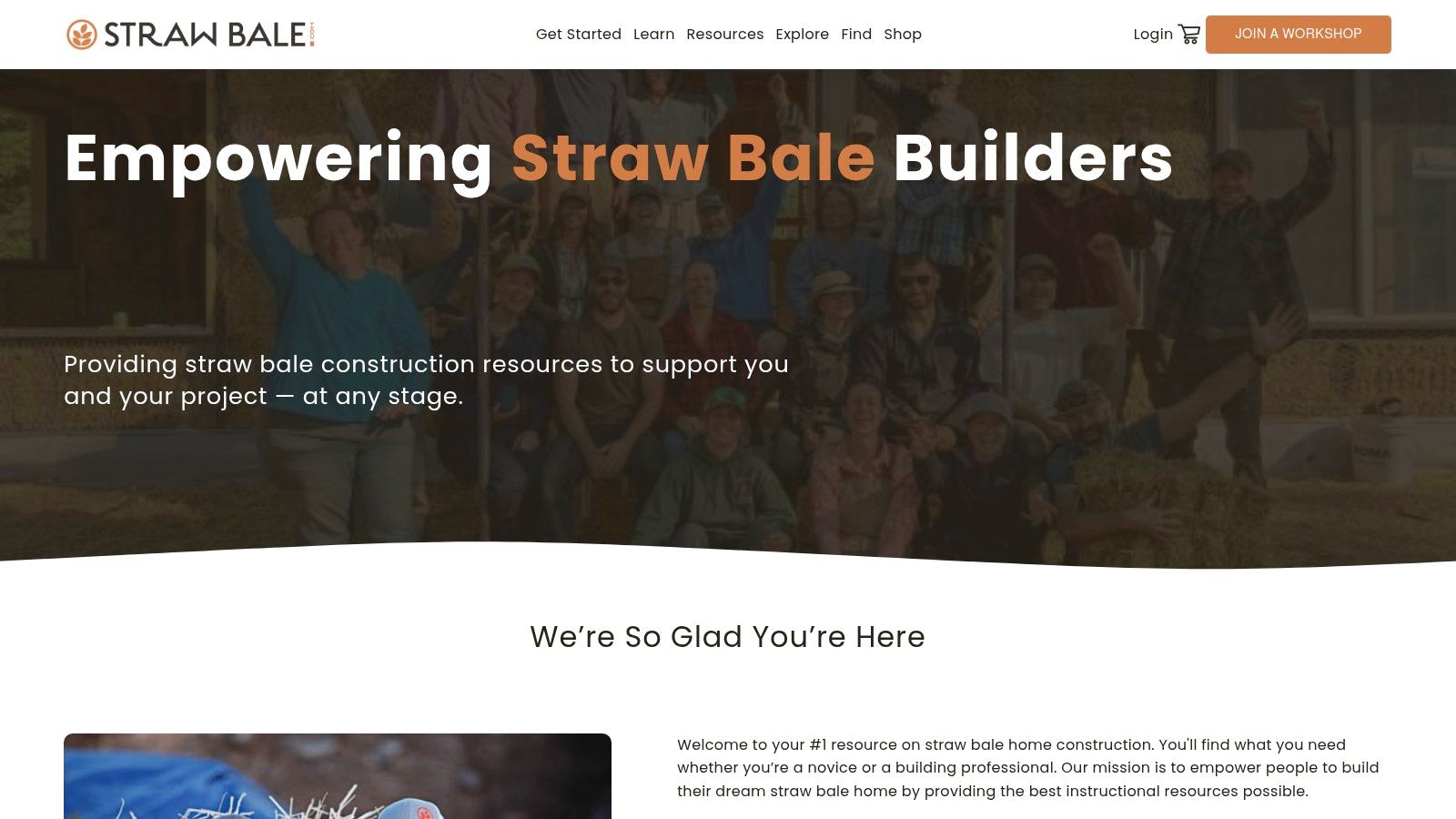
Straw bale walls achieve remarkable thermal insulation with R-values ranging from 30-50, significantly higher than conventional building materials. This translates to drastically reduced heating and cooling costs, a key feature for energy-efficient smart homes. The thick walls (typically 18-24 inches) also provide excellent sound dampening, creating a tranquil and comfortable interior environment, perfect for those seeking a peaceful retreat. The breathable nature of straw bale also regulates humidity, contributing to a healthier indoor climate. This natural humidity control can be especially beneficial in Australia's varied climate.
One of the key benefits of straw bale construction is its low environmental impact. It uses agricultural waste that would otherwise be burned, reducing greenhouse gas emissions and promoting a circular economy. This aligns perfectly with the values of environmentally conscious homeowners. Furthermore, straw bale has very low embodied energy and a minimal carbon footprint, further contributing to its eco-friendly credentials, a crucial consideration for those aiming for sustainable building practices.
While pricing can vary depending on the project's scale and location within Australia, it's important to note that straw bale construction can be labour-intensive, potentially increasing construction costs. However, these costs can be offset by long-term energy savings. Technical requirements include proper moisture management techniques, a robust foundation, and sufficient roof overhangs to protect the straw bales from the elements. Ensuring compliance with local building codes is essential and may require consultation with experienced builders specializing in straw bale construction.
Pros:
- Very low embodied energy and carbon footprint
- Excellent fire resistance when properly plastered (lime or earth-based plasters are recommended)
- Creates comfortable interior environments with stable temperatures
- Readily available in many agricultural regions of Australia
- Excellent sound insulation
Cons:
- Requires specific moisture management techniques (essential in the Australian climate)
- Labor-intensive construction process, potentially affecting build times
- Needs appropriate foundation and roof overhangs for longevity (crucial for Australia's varying weather conditions)
- Building code compliance can be challenging in some jurisdictions (consult with local authorities and experienced builders)
Straw bale construction deserves its place on this list of eco-friendly building materials because it offers a truly sustainable, high-performance, and comfortable building solution. It's particularly well-suited for those seeking a unique, eco-conscious approach to building or renovating luxury homes in Australia. For more information, visit https://www.strawbale.com.
7. Rammed Earth
Rammed earth is a standout choice amongst eco friendly building materials, offering a unique blend of ancient technique and modern application perfectly suited for discerning Australian homeowners. This method involves compacting moistened subsoil within temporary formwork to create robust, monolithic walls. The addition of small amounts of cement or lime, common in contemporary rammed earth construction, enhances durability and structural integrity. Learn more about Rammed Earth
This building method is especially attractive for those seeking a truly unique aesthetic. The resulting walls showcase the natural stratification of the earth, creating a visually stunning and distinctive layered appearance. Imagine the impact of these naturally textured walls in a luxury custom home or as part of a seamless modern extension. The earthy tones and inherent beauty of rammed earth lend themselves particularly well to bespoke property renovations, bringing a touch of natural elegance to any project.
Beyond its aesthetic appeal, rammed earth offers substantial practical benefits, particularly in Australia's climate. Its exceptional thermal mass provides outstanding passive heating and cooling, regulating indoor temperatures naturally and reducing reliance on energy-intensive HVAC systems. This inherent energy efficiency aligns perfectly with the desires of technology-oriented individuals seeking smart, energy-efficient homes. Whether you’re planning a ground floor extension, adding a second story, or building an entirely new residence, rammed earth contributes to a more sustainable and comfortable living environment.
Features and Benefits:
- Extremely Low Embodied Energy: Utilizing local soil significantly minimizes transportation and processing energy, making rammed earth a truly sustainable choice.
- Superior Thermal Mass: Provides excellent passive heating and cooling, reducing energy consumption and promoting a comfortable indoor climate.
- Longevity: Rammed earth structures can last for centuries with proper design and maintenance, offering exceptional value and durability.
- Natural Resistance: Inherent fire, pest, and sound resistance contribute to a safer and healthier home environment.
- Unique Aesthetic: The distinctive layered appearance of rammed earth walls creates a visually captivating and unique architectural element.
Pros:
- Creates incredibly durable, low-maintenance structures.
- Naturally regulates indoor humidity and temperature.
- Utilizes minimally processed, locally sourced materials, minimizing environmental impact.
- Non-toxic, promoting healthy indoor air quality.
Cons:
- Labor-intensive construction requiring specialized expertise, which can be a cost factor, particularly in regions where the technique is less common.
- Suitable soil composition is crucial for successful implementation.
- Wall thickness (typically 18-24 inches) can reduce usable interior space, a consideration especially relevant for smaller extensions or renovations.
- Higher costs may be incurred in areas without readily available skilled rammed earth builders.
Pricing and Technical Requirements:
While precise pricing is dependent on project specifics, location, and availability of skilled labor, it's important to factor in potentially higher initial costs compared to conventional construction. However, the long-term benefits of energy savings and minimal maintenance can offset these initial expenses. Technical requirements include soil testing to ensure proper composition and the involvement of experienced rammed earth builders for optimal results.
Comparison with Similar Tools:
Compared to other eco friendly building materials like straw bale or hempcrete, rammed earth boasts superior strength and durability. While these alternatives also offer excellent insulation, rammed earth's thermal mass provides a different kind of temperature regulation, ideal for mitigating temperature fluctuations in Australian climates.
Implementation Tips:
- Engage a qualified rammed earth specialist early in the design process.
- Conduct thorough soil testing to assess suitability and determine optimal mix designs.
- Carefully plan for the thicker wall dimensions to maximize interior space utilization.
For more information about rammed earth construction, visit the Rammed Earth Institute. Rammed earth deserves its place on this list for its exceptional combination of sustainability, durability, aesthetic appeal, and performance benefits, making it an ideal choice for discerning homeowners seeking to create truly unique and environmentally conscious homes.
8. Mycelium Composites
Mycelium composites are revolutionizing the landscape of eco-friendly building materials in Australia and beyond. Unlike traditional materials that are manufactured, mycelium composites are grown. Utilizing the root structure of mushrooms (mycelium) as a natural binder, agricultural waste products like corn stalks, hemp hurds, or sawdust are transformed into strong, lightweight building blocks. This innovative process results in a material with exceptional insulation, acoustic properties, and inherent fire resistance, all while being entirely biodegradable. Applications range from insulation panels and acoustic tiles to packaging and even furniture components, making it a versatile choice for sustainable building practices.
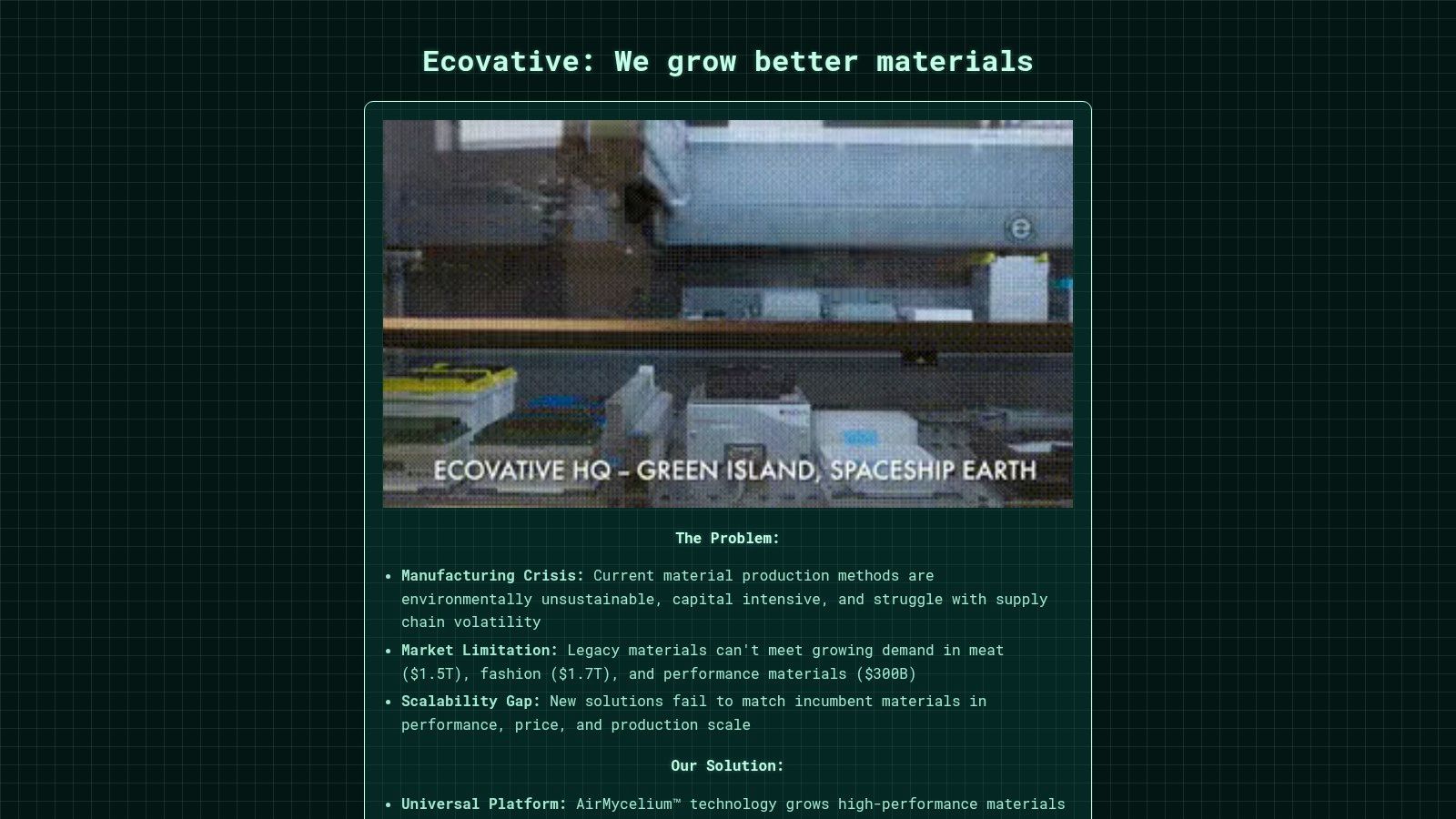
For affluent homeowners in Caulfield, Victoria seeking to build custom luxury residences or those planning modern extensions and renovations, mycelium composites offer a unique opportunity to incorporate truly sustainable materials. Imagine a home insulated with a material that's grown, not manufactured, contributing to a significantly lower carbon footprint and supporting healthy indoor air quality. The excellent thermal and acoustic properties translate to energy efficiency and a quieter, more comfortable living environment, features highly desirable in high-end homes. Technology-oriented individuals seeking smart, energy-efficient homes will also appreciate the forward-thinking nature of this material. Whether it's a second-story addition or a ground-floor extension, mycelium composites can be incorporated into various building projects.
Specific features of mycelium composites that make them stand out amongst other eco-friendly building materials include their rapid growth cycle (days, not weeks or months), full biodegradability and compostability, and the ability to be molded into various shapes and densities. This adaptability allows for bespoke design solutions, catering to the unique requirements of luxury builds and renovations. Its natural fire resistance, without the need for chemical additives, is another significant advantage, especially in the Australian climate.
While the benefits are numerous, it's important to acknowledge the current limitations. Commercial availability and standardization are still developing in Australia, and the cost is currently higher than traditional materials due to smaller-scale production. Precise growing conditions and quality control are essential for optimal performance, and research is ongoing regarding long-term durability in various Australian climate conditions. However, as research progresses and production scales up, costs are expected to decrease, making mycelium composites increasingly accessible.
Pros:
- Extremely low embodied energy and carbon footprint
- Upcycles agricultural waste streams
- Completely non-toxic and supports healthy indoor air quality
- Can be grown locally, reducing transportation impacts
Cons:
- Limited commercial availability and standardization in Australia
- Currently higher cost than conventional materials
- Requires specific growing conditions and quality control
- Long-term durability in diverse Australian climates still under research
For those interested in exploring the potential of mycelium composites further, Ecovative Design (https://www.ecovativedesign.com) is a leading company in this field. They offer further information and insights into this cutting-edge sustainable building material. Mycelium composites represent a significant step towards a truly circular economy in the building industry, offering a compelling alternative to traditional, resource-intensive materials for discerning homeowners seeking sustainable luxury.
9. Cross-Laminated Timber (CLT)
Looking for eco friendly building materials for your next project? Cross-Laminated Timber (CLT) is revolutionising how we think about sustainable construction, particularly for discerning homeowners in Caulfield, Victoria pursuing luxurious, modern, and environmentally conscious designs. CLT is an engineered wood product crafted by layering dimensional lumber boards in alternating directions and bonding them with structural adhesives. This process results in remarkably strong, stable panels that can effectively replace concrete and steel in mid-rise and even high-rise buildings, making it a truly innovative addition to the list of eco friendly building materials.
CLT's strength and prefabricated nature make it ideal for a variety of applications relevant to affluent Caulfield, Victoria homeowners:
- Second and Ground Floor Extensions: CLT panels are perfect for adding extra living space, whether expanding upwards or outwards. Their inherent strength allows for large open-plan designs and impressive cantilevers, minimizing the need for internal supporting walls. Learn more about Cross-Laminated Timber (CLT) and how it can create seamless indoor-outdoor flow.
- Bespoke Property Renovations: The precision and flexibility of CLT make it a dream for complex renovations. Its lightweight nature can simplify structural modifications, and the prefabricated elements allow for quick and efficient installation, minimizing disruption.
- Custom Luxury Residences: For those seeking a truly unique home, CLT offers unparalleled design freedom. From dramatic curved walls to soaring ceilings, CLT empowers architects to realise ambitious visions while maintaining structural integrity and sustainability.
Features and Benefits:
- Strength and Stability: CLT panels are robust enough to replace concrete and steel in many applications, offering exceptional structural performance.
- Prefabrication: CLT is manufactured off-site with precise dimensions, allowing for rapid and efficient on-site assembly, potentially reducing construction time and associated costs.
- Fire Resistance: Despite being wood-based, CLT exhibits excellent fire resistance due to its layered construction. The char layer that forms during a fire insulates the inner layers, slowing the burn rate.
- Carbon Sequestration: CLT stores carbon throughout the building's lifespan, contributing to a lower carbon footprint. This aligns perfectly with the growing demand for eco friendly building materials in Australia.
- Biophilic Design: The exposed wood surfaces create warm, inviting, and biophilic interior environments, promoting a sense of well-being.
Pros:
- Lower Embodied Carbon: CLT has a significantly lower embodied carbon footprint than concrete or steel.
- Faster Construction: Prefabrication allows for faster on-site assembly and less construction waste.
- Thermal Performance: CLT provides natural thermal insulation and humidity regulation, contributing to energy efficiency.
- Airtightness: Precise manufacturing reduces air leakage and improves energy efficiency.
Cons:
- Sustainable Sourcing: Requires sustainable forest management certification to ensure true eco-benefits, an important consideration for environmentally conscious homeowners.
- Material Cost: While potentially offset by faster construction, the initial material cost of CLT can be higher than conventional framing.
- Manufacturer Availability: The number of CLT manufacturers may be limited in some regions of Australia.
- Adhesives: The adhesives used in CLT production may contain some synthetic compounds.
Pricing and Technical Requirements:
Pricing for CLT varies depending on the project specifics, including size, complexity, and finishes. It's crucial to consult with a CLT supplier or structural engineer for accurate pricing and to determine the technical requirements for your project. Factors like span lengths, load-bearing capacities, and connection details need to be carefully considered.
Comparison with Similar Materials:
Compared to traditional timber framing, CLT offers superior strength, dimensional stability, and fire resistance. While concrete and steel may offer comparable strength, they lack the environmental benefits and speed of construction afforded by CLT.
Implementation Tips:
Engage early with a CLT specialist: Early involvement of a CLT supplier or engineer ensures optimal design and cost-effectiveness.
Consider transportation and logistics: Factor in the transportation and handling of large CLT panels during project planning.
Coordinate with other trades: Effective communication and coordination with other trades are essential for seamless integration of CLT into the building process.
For more information on CLT, visit Think Wood. By choosing CLT, you're not just building a beautiful home; you're investing in a sustainable future.
Eco-Friendly Building Materials Comparison
Material | Core Features / Strengths | User Experience / Quality ★ | Value Proposition 💰 | Target Audience 👥 | Unique Selling Points ✨ |
Bamboo | Rapid growth, high strength | ★★★★☆ | 💰💰 (affordable + eco) | Eco-conscious builders | Up to 3 ft/day growth, steel-strength |
Recycled Steel | 100% recyclable, durable | ★★★★★ | 💰💰💰 (higher initial cost) | Structural/build contractors | Circular economy, lowers embodied energy |
Cork | Thermal/acoustic insulation | ★★★★☆ | 💰💰💰 (premium) | Luxury/interior designers | Sustainable bark harvesting, hypoallergenic |
Hempcrete | Carbon-negative, moisture control | ★★★★☆ | 💰💰 (mid-range) | Sustainable builders | Carbon sequestering, breathable walls |
Reclaimed Wood | Unique aesthetics, durable | ★★★★★ | 💰💰💰 (labor intensive) | Heritage/restoration projects | Historical character, zero deforestation |
Straw Bale | Exceptional insulation, breathable | ★★★★ | 💰 (low cost) | Eco-friendly homes | Uses agri-waste, thick sound-dampening walls |
Rammed Earth | Low embodied energy, thermal mass | ★★★★☆ | 💰💰 (variable regional) | Sustainable designers | Local soil use, centuries-long lifespan |
Mycelium Composites | Grown biomaterials, insulation | ★★★☆☆ | 💰💰💰 (innovative/limited) | Experimental/sustainable build | Rapid growth, fully biodegradable |
Cross-Laminated Timber (CLT) | Strong, prefabricated, fire-resistant | ★★★★★ | 💰💰💰 (premium + efficient) | Mid/high-rise construction | Replaces steel/concrete, fast assembly |
Embracing Sustainable Choices for the Future of Building
This exploration of eco-friendly building materials reveals a wealth of options for environmentally conscious construction in Australia. From the versatility of bamboo and reclaimed wood to the innovative applications of mycelium composites and hempcrete, the possibilities for creating sustainable, high-performance homes are vast. Key takeaways include the strength and renewability of bamboo, the durability and recyclability of steel, the excellent insulation properties of cork and straw bale, the unique aesthetic of rammed earth, and the cutting-edge potential of CLT and mycelium composites. Choosing the right material depends on your specific project needs, whether it's a second-storey extension, a ground floor expansion, or a complete new build. Factors such as budget, desired aesthetic, local availability, and the specific performance requirements of the structure all play a crucial role in the decision-making process.
Selecting the most appropriate eco-friendly building materials can be complex. Consider the climate in your region of Australia, the desired thermal performance, and the overall design aesthetic you wish to achieve. For robust structures, recycled steel may be ideal. If you’re seeking visually striking feature walls, rammed earth might be the perfect choice. For efficient prefabrication methods in your modern extension, CLT offers significant advantages. Understanding these nuances is critical for successful implementation.
The future of building is undeniably green. By embracing eco-friendly building materials, we not only create beautiful, healthy homes but also contribute to a healthier planet. Ready to embark on your sustainable building journey? Envy Abode specializes in incorporating eco-friendly building materials into stunning, custom luxury residences and renovations. Visit Envy Abode today to discover how their expertise can help you build the sustainable home of your dreams.